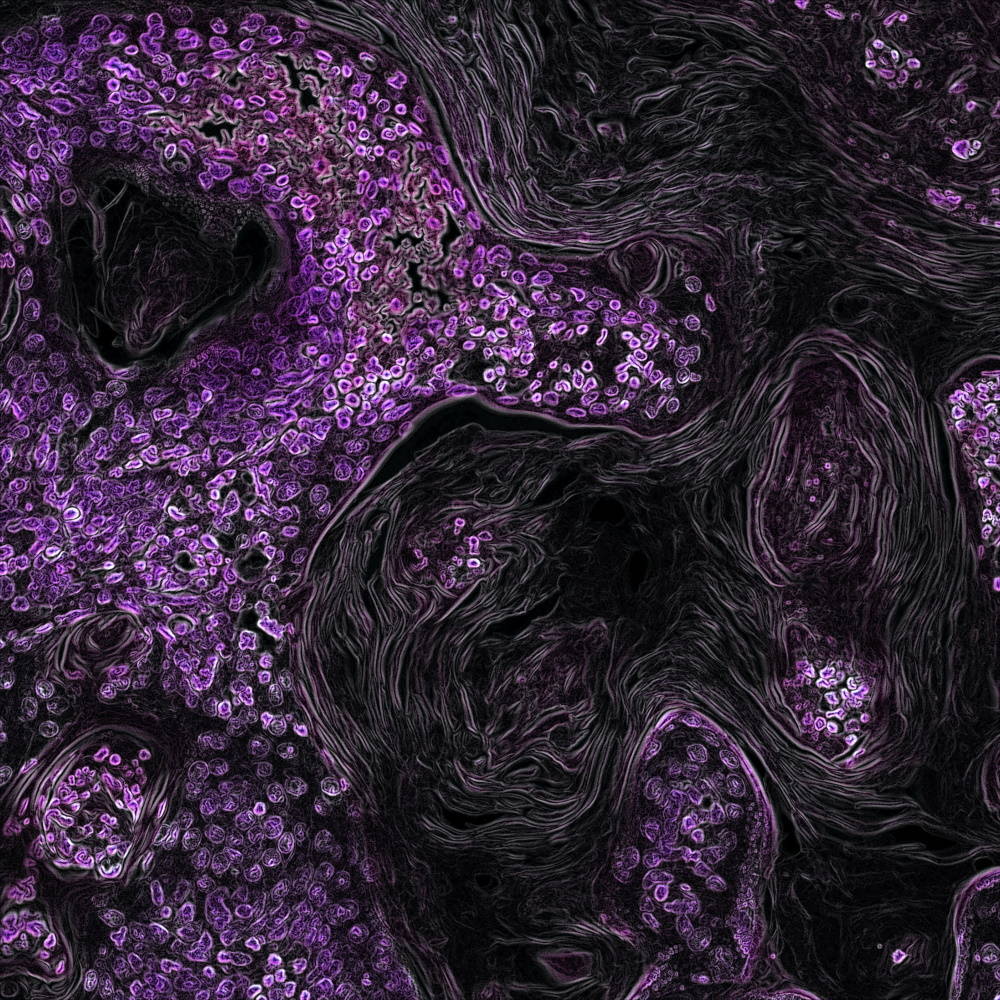MTHFR GENE:
learn the truth
Posted by Tye Jensen, 21st December 2020
tldr:
The MTHFR gene is involved in the conversion of folate (folic acid and food-derived folates) into the bioactive form, called methylfolate or 5-MTHF.
Variations in the MTHFR gene impact the efficiency of this conversion. The C677T polymorphism typically reduces conversion efficiency by ~35% per copy and A1298C reduces conversion by ~20% per copy.
Based on the efficiency of your MTHFR enzyme, Rootine doses folic acid and methylfolate accordingly.
Contrary to widespread misinformation, MTHFR mutations do not make folic acid toxic, regardless of genotype.
What is folic acid?
Folic Acid is the synthetic form of naturally-occurring Folate (also called Vitamin B9), which is a nutrient essential for creating and maintaining cells (such as red blood cells), creating and repairing DNA, preventing birth defects, regulating blood homocysteine levels (elevated homocysteine is a risk factor for heart disease), and other vital functions [1].
In fact, folic acid is so important that in 1998, the US rolled out a mandate that required cereal grain products to be fortified with folic acid (140 mcg of folic acid per 100 grams of flour) [2]. According to the Food Fortification Initiative’s 2017 report [3], 87 countries have legislation for fortifying “wheat, flour, maize flour, and/or rice” with folic acid.
Folic acid (also called pteroylmonoglutamic acid) is a synthetic form of vitamin B9 and represents the first molecule in an enzymatic process that results in the bioactive form of folate, called methylfolate or 5-MTHF.
As important as folate / folic acid is, there is much misinformation about dose, form, and genetic variations related to vitamin B9 metabolism.
What happens when I take folic acid?
Here is the simplified 3-step process of folate metabolism with the enzymes that make this conversion possible:
- Folic acid is converted by the DHFR enzyme into 5-formyltetrahydrofolate. The implications of the DHFR enzyme will be discussed later.
- 5-formyltetrahydrofolate is converted 5,10-methylenetetrahydrofolate. These molecules are the naturally-occurring types of folate found in foods.
- The MTHFR enzyme converts 5, 10-methylenetetrahydrofolate into 5-methyltetrahydrofolate, or 5-MTHF for short. This is the bioactive form of folate.
As you can see, the DHFR enzyme and the MTHFR enzyme are key factors in this pathway.
What is a gene?
For those without a formal background in biology, we must discuss the central dogma of molecular biology. This states that "DNA makes RNA, and RNA makes protein." In more simple terms, your DNA is the blueprint that determines how proteins are built. Proteins have many functions in the body, including cell structure and adhesion, signaling properties, and perform chemical reasons. This final class are called "enzymes" and help a chemical reaction along to change substances into another form by modifying, combining, or splitting the substance. This is important information because if a protein (in this case, an enzyme) is not built correctly, it often does not perform its function correctly.
Regarding MTHFR and folic acid, these enzymes function as catalysts that make a reaction occur (e.g. converting one substance into another).
Vocabulary: a "gene" is a coding region of DNA.
Mutations (errors) in the MTHFR gene can cause structural changes in the MTHFR enzyme and impact its function. Every person has two copies of the MTHFR gene (one from each parent) which is important to know as we discuss the impact of MTHFR gene mutations on total folate conversion efficiency.
The MTHFR enzyme is deeply involved in how our body processes folic acid into 5-MTHF and genetic variations in this gene can have significant health consequences.
What is a SNP?
Two notable “single nucleotide polymorphisms” (called SNPs) exist in the MTHFR gene. A SNP is a type of mutation that results from the incorrect nucleotide (the building block of DNA) being in the DNA strand. Another way to think about this is to imagine an incorrect letter swapped into a word within a sentence. Sometimes, these swaps are completely benign and there are no physiologic consequences. In other cases, these SNPs result in a different amino acid coded for during transcription (the process of converting genetic information to a protein sequence).
Remember the central dogma: The biological flow of information is DNA → RNA → Protein.
If the incorrect amino acid (the building block of a protein) is inserted into the protein, it can change the structure of the protein and thus alter its function. In many biological cases, incorporating the incorrect amino acid into a enzyme will reduce the processing efficiency of the enzyme.
For example, SNPs in the MTHFR gene reduce the conversion efficiency of 5, 10-methylenetetrahydrofolate to the bioactive 5-MTHF. This is the basis of why MTHFR gene mutations matter for dosing (amount and type) folate.
MTHFR mutations
In short, SNPs can influence folate conversion by altering the structure of the MTHFR enzyme.
By far the most studied and impactful SNPs being:
- The C677T variation (or, “polymorphism”). This represents a C>T mutation at mRNA position 677 and results in the amino acid “alanine” being swapped with “valine” in the protein product at position 222.
- The A1298C variation. This represents a A>C mutation at mRNA position 1298 and results in the amino acid “glutamic acid” being swapped with an “alanine” in the protein product at position 429.
As mentioned, one copy of the MTHFR gene is inherited from each parent, resulting in the chance to inherit:
- two working copies,
- one impaired and one working copy,
- or two impaired copies.
If two copies of the C677T mutation are inherited, the individuals is designated as 677TT. The same can occur with the A1298C mutation, with the homozygous designation being 1298CC. In addition, these two polymorphisms can be co-inherited, meaning that you can inherit one copy of the MTHFR gene with a C677T polymorphism, and the other with A1298C polymorphism. This is called a compound heterozygous mutation.
The C677T polymorphism typically reduces conversion efficiency by approximately 35% per copy and A1298C reduces conversion by approximately 20% per copy (2, 6, 7, 8).
Folate Implications
When considering these polymorphisms and other lifestyle factors, it is clear that a spectrum of folate conversion exists from a populational view. For simplicity, the population distribution can be roughly grouped into quintiles by conversion efficiency, compared to wild-type:
|
Genotype |
C677C (wild-type) |
C677T (heterozygous) |
T677T (homozygous) |
|
A1298A (wild-type) |
100% efficiency 15% of population |
51-73% efficiency 20% of population |
22-32% efficiency 9% of population |
|
A1298C (heterozygous) |
60-92% efficiency 26% of population |
36-60% efficiency 20% of population |
N/A |
|
C1298C (homozygous) |
52-60%efficiency 9% of population |
N/A |
N/A |
Common misunderstanding
Due to the high prevalence of MTHFR gene mutations and the important role that bioactive folate plays in human health, “folic acid vs. folate” supplementation has become an incredibly contested topic. Unfortunately, many misconceptions exist, especially around folic acid supplementation.
The primary contention revolves around “unmetabolized folic acid,” abbreviated UMFA. Health concern arises from folic acid remaining in its synthetic, inactive form (not undergoing enzymatic change) and circulating or accumulating in the body. The common assumption is that genetic variations in the MTHFR gene lead to inefficiencies in the folic acid conversion pathway, and thus lead to accumulation of UMFA in the blood of these individuals; however, this is incorrect.
High levels of UMFA 1) can accumulate in the blood and 2) can be dangerous; however, this has nothing to do with the MTHFR enzyme. The MTHFR enzyme is the last step in the conversion process and does not interact with folic acid. Thus, MTHFR mutations will only lead to elevated levels of 5, 10-methylenetetrahydrofolate, the substrate for the MTHFR enzyme - which has not been shown in research to have any negative side effects.
To produce high UMFA in the blood, we need to discuss the DHFR enzyme. This is the first enzyme in the simplified 3-step process. The DHFR enzyme converts folic acid to 5-formyltetrahydrofolate (12). There are two instances in which folic acid buildup can occur:
- Overload the DHFR enzyme with large amounts of folic acid (the amount required ranges from 500 mcg to 1000 mcg).
- Mutations in the DHFR gene can reduce folic acid conversion efficiency, resulting in folic acid overload at a much lower level of folic acid.
According to the European Food Safety Authority, you can have a maximum daily intake of 1,000 mcg of Folic Acid before the nutrient has adverse effects on your body (13). But, for those with the DHFR variation, the recommended upper intake of Folic Acid is 500 mcg.
For people with MTHFR SNPs, unmetabolized folic acid is not the issue. Instead, it is potential deficiency in bioactive folate (5-MTHF) due to the reduced processing capacity of 5, 10-methylenetetrahydrofolate into 5-MTHF, by the MTHFR enzyme. To be clear, even mutated MTHFR enzymes still convert the substrate into 5-MTHF, the speed of the conversion is just reduced, to varying degrees.
In short, SNPs in the MTHFR gene can influence folate conversion by altering the structure of the MTHFR enzyme.
This information is valuable when determining the optimal dose of vitamin B9.
MTHFR solutions
Our approach is straightforward, although complex.
We calculate your ideal intake range of vitamin B9 based on biometric data, like age, height, weight, diet, and lifestyle.
We then layer in folate-related blood data (if available) to further hone in on your ideal dose, based on the level in your blood and other functional markers of folate metabolism.
Finally, we further adjust your total folate dose and the form ratio (folic acid vs. methylfolate) based on your genetics. We match your MTHFR folate conversion efficiency with folic acid (percent efficient) and methylfolate (percent inefficient) to ensure you are receiving the optimal level of bioactive folate (aka methylfolate or 5-MTHF).
Why not just methylfolate?
Observationally, we've found that people with certain genotypes (in particular, variants of COMT) react adversely to large intakes of methylfolate, especially if they are starting from an impaired folate and methylation status.
Folate is an integral part of the methylation cycle (i.e. one-carbon metabolism). This cycle plays a role in neurotransmitter production, particularly monoamines such as dopamine, serotonin, and noradrenaline.
We have found - which is supported in emerging research and clincal experience - that large boluses of methylfolate (especially in the presence of slow COMT variants) can produce undesirable short-term cognitive side effects.
Discover The Future of Personalized Nutrition
Start testing, knowing, and feeling better, now.



